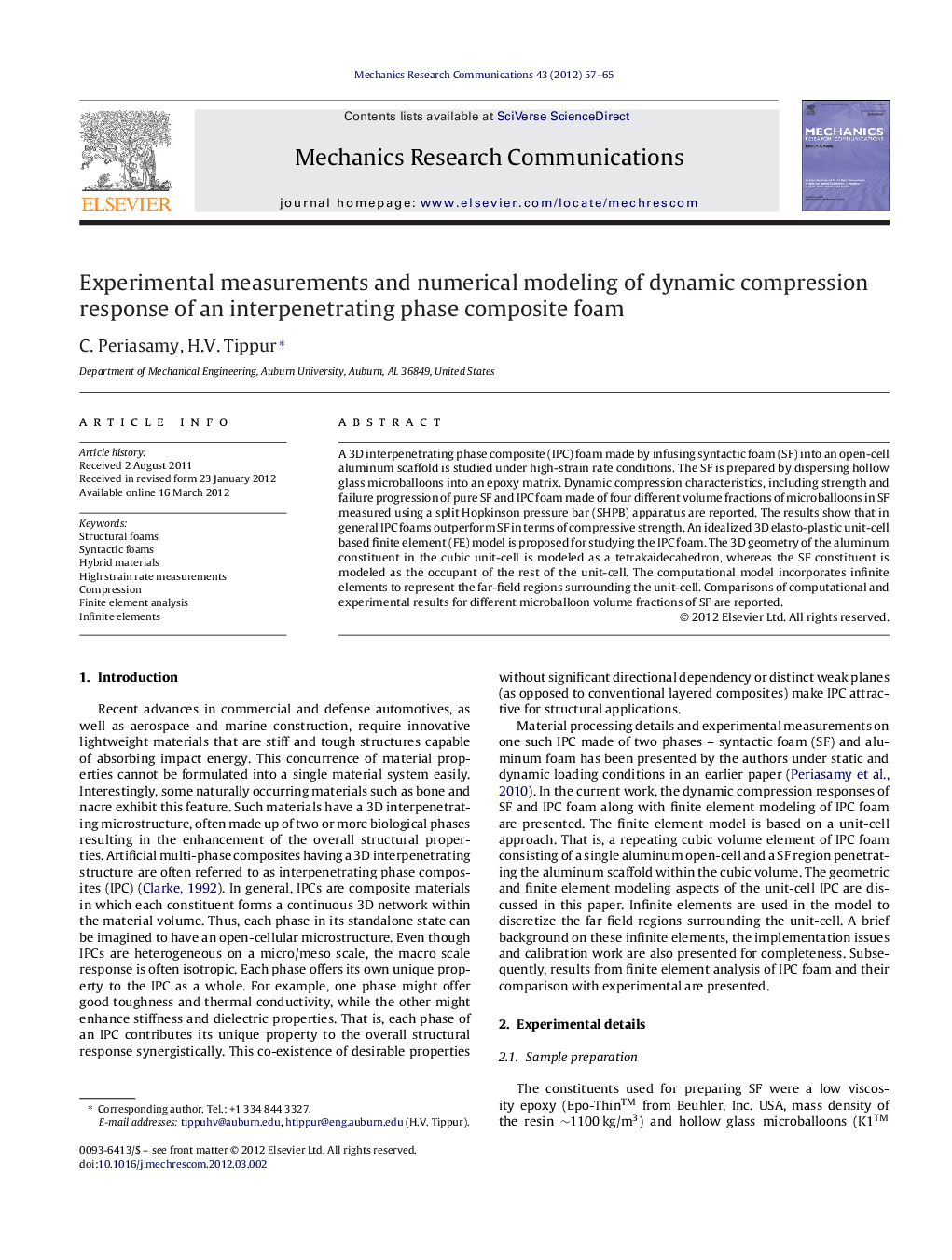| Article ID | Journal | Published Year | Pages | File Type |
|---|---|---|---|---|
| 800984 | Mechanics Research Communications | 2012 | 9 Pages |
A 3D interpenetrating phase composite (IPC) foam made by infusing syntactic foam (SF) into an open-cell aluminum scaffold is studied under high-strain rate conditions. The SF is prepared by dispersing hollow glass microballoons into an epoxy matrix. Dynamic compression characteristics, including strength and failure progression of pure SF and IPC foam made of four different volume fractions of microballoons in SF measured using a split Hopkinson pressure bar (SHPB) apparatus are reported. The results show that in general IPC foams outperform SF in terms of compressive strength. An idealized 3D elasto-plastic unit-cell based finite element (FE) model is proposed for studying the IPC foam. The 3D geometry of the aluminum constituent in the cubic unit-cell is modeled as a tetrakaidecahedron, whereas the SF constituent is modeled as the occupant of the rest of the unit-cell. The computational model incorporates infinite elements to represent the far-field regions surrounding the unit-cell. Comparisons of computational and experimental results for different microballoon volume fractions of SF are reported.
